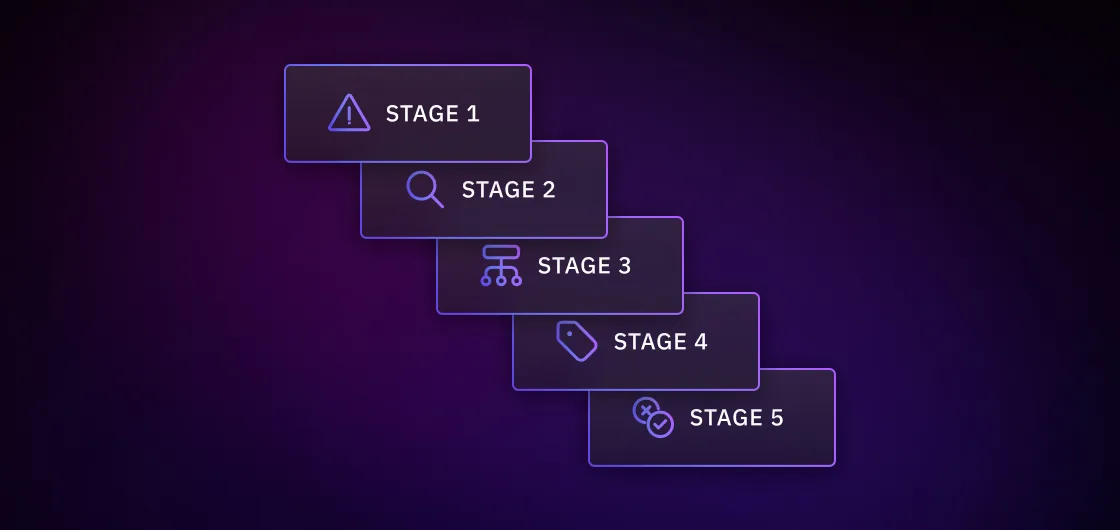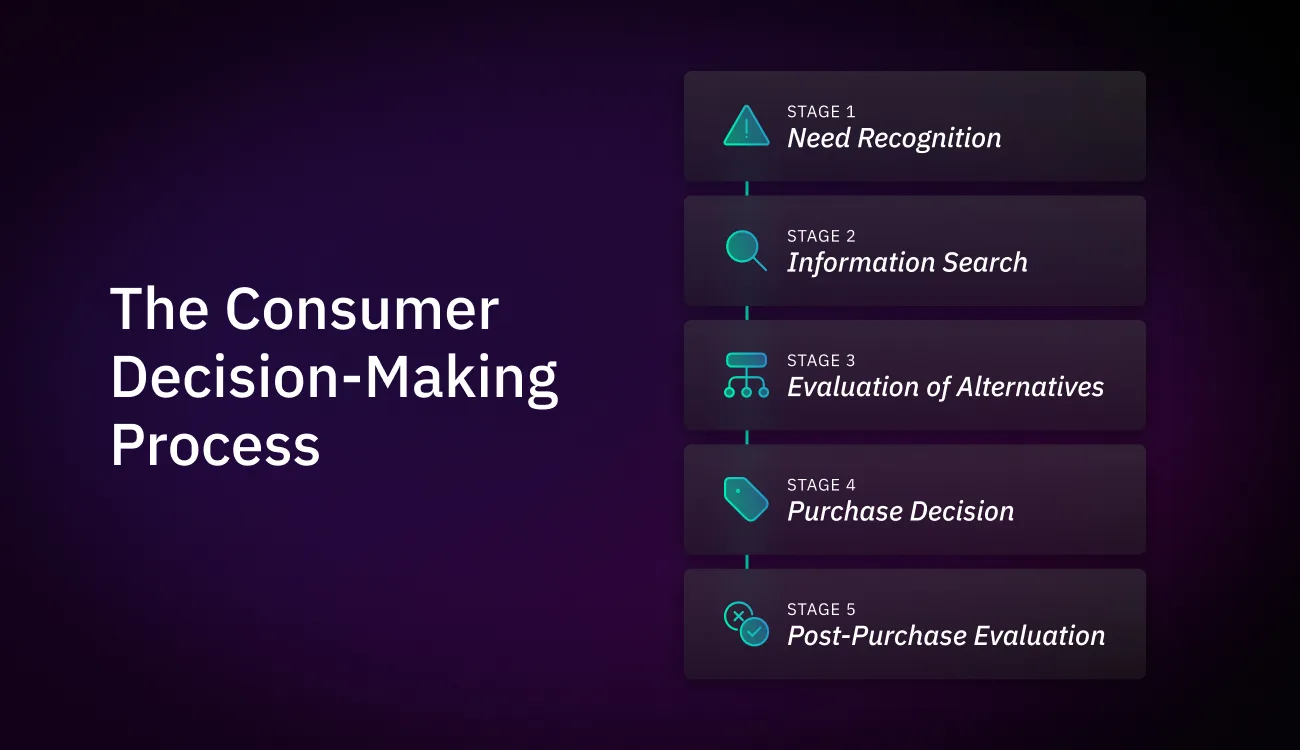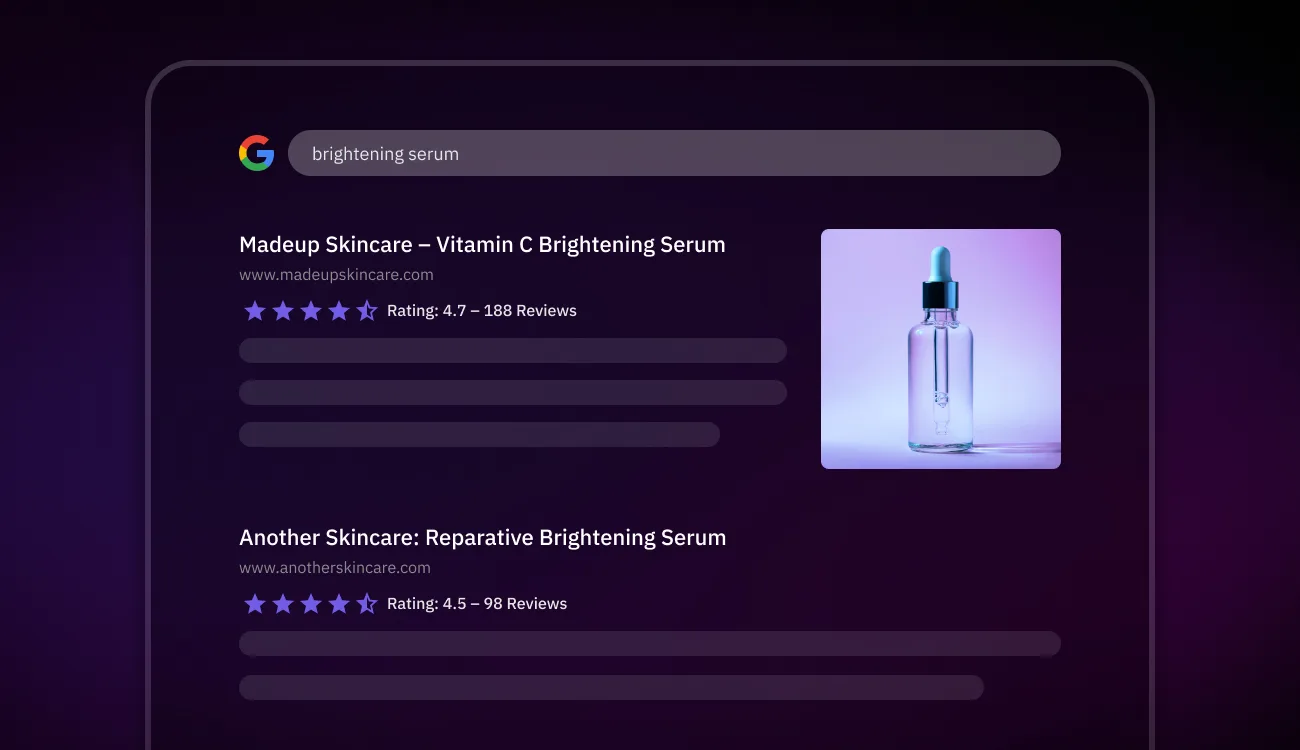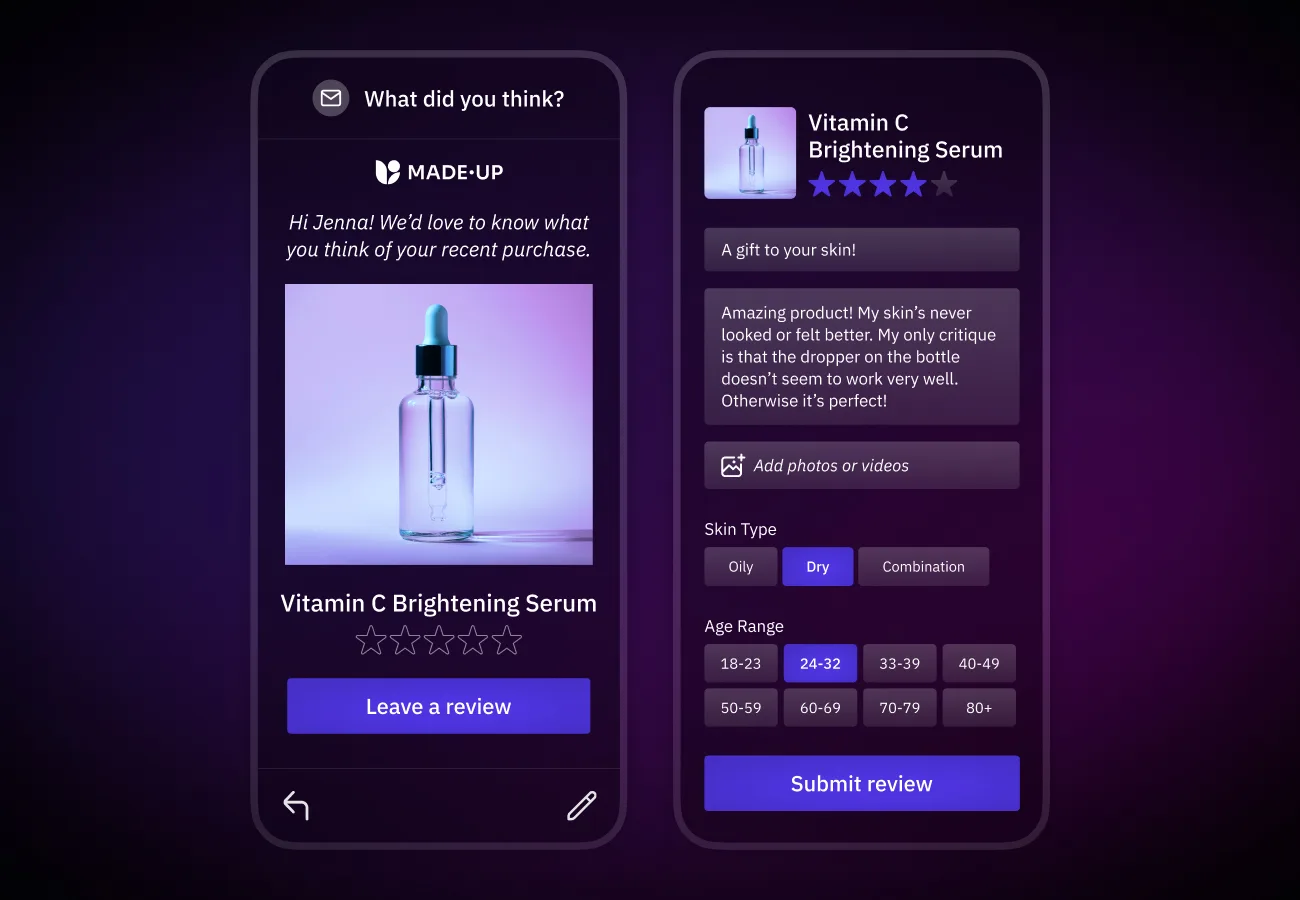
- Customer Marketing
- Reviews and UGC
- Social Proof
How To Add Social Proof on Shopify
Katie Vaught | Apr 25, 2025
Mar 26, 2024 | 10 minute read

Megan Wenzl
Content Marketing Manager
Uncover the psychology of customer decision-making. Learn about the stages and factors that shape consumer choices in this guide.
After a customer makes a purchase and you finish celebrating another conversion, the questions begin. What had the biggest influence on the consumer’s decision-making process? How much research and comparison was involved? Was it a specific campaign or a combination?
These types of questions regarding the consumer decision-making process often plague marketers. While data and analysis can provide plenty of insights into your customer journey, the full scope and lead-up to a customer clicking “buy now” remains a bit of a mystery.
This is where an analysis of the stages of your consumer decision-making process comes into play. Understanding it from end-to-end is critical for your brand to effectively cater to your customer needs and preferences.
This guide will dive into each of the five key steps of the consumer decision-making process including understanding consumer needs, the customer experience, information search, purchase decision, and post-purchase decision.
The consumer decision-making process involves a multi-step journey through which potential customers identify a need, research solutions, compare alternatives, move forward with a purchase, and reflect on their decision.
While consumers generally follow the stages in this order, remember that the consumer decision-making process is dynamic and can vary for each individual. This means you have to constantly adapt to your customers’ evolving preferences and feedback cycles.
When you thoroughly comprehend each stage, you can better improve your customer journey, intervene at friction points, identify opportunities for cross-sells or upsells, and ultimately increase the frequency of customers clicking “buy now.”
The stages in the consumer decision-making process can be summarized into five key steps, each of which plays an important role:

Now that we’ve covered the basic steps, let’s explore each stage in more detail.
Every customer journey or decision-making process starts with a need. Without a need of some sort, no purchase would ever occur. Needs can be real needs, like food or water, or needs can be wants. A need encompasses a range of desires, preferences, and requirements that influence the decision-making process. Needs can be:
Successful marketing campaigns understand the different types of needs and effectively tailor the experience to meet those needs all while serving the target customer through each stage of the process. You can build customer-centric marketing campaigns by identifying needs through:
As a brand, keeping abreast of changing customer patterns and continuously making adjustments is fundamental to ensuring you provide a positive customer experience. When the customer base needs change, your processes and experience should evolve in harmony with new shopping behaviors and demands.
A target audience is a group of individuals or demographics that a brand aims to reach (or “target”) and engage with its products or services. When evaluating the decision-making process, you must first identify your target audience to better understand the specific nuances that should transpire in the customer journey.
This allows you to tailor your messaging, positioning, and promotions to resonate with the preferences and interests of your intended consumers.
A fundamental part of the overarching customer journey is the information search stage. During this stage, customers begin researching solutions to their needs and actively compare brands before ultimately making a selection.

Customers gather information from a variety of sources, including reviews and Google, and use the information to narrow down their options. This explains why it’s important to have a presence on a variety of platforms and touchpoints so that you remain top of mind and have influence over the information being gathered.
A customer could be influenced to make a decision through word-of-mouth, past experiences, or online research before making a final decision.
Word-of-mouth and past experiences are more difficult for brands to control, but search engine optimization (SEO) is a channel in which brands can ensure they are represented and have a strong presence.
Marketers should strive for a comprehensive SEO strategy that focuses on relevant keywords for the specific needs and target audiences that your brand fulfills. This is a subtle way to feed information directly to the customer and insert your brand into the customer’s list of alternatives for consideration.
Depending on the product or service, several factors can influence a consumer’s information search, including:
During the third stage of the decision-making process, customers use the information search and identification of potential solutions to compare and evaluate alternatives. At this stage, you are in direct competition with other brands and are vying for customers’ recognition that your brand is the best option based on the customer’s set of criteria.
The customer could be evaluating alternatives based on a variety of criteria. Some criteria include:
Customers may choose to prioritize one or several of these criteria over another when evaluating alternatives. You must conduct thorough market research in order to understand which customer incentives will sway the decision-making process for your target audience the most.
Similarly, brands may choose to prioritize one of these criteria over another to secure a competitive advantage. For example, an apparel brand might forgo price or discount-based marketing and instead pursue improving their quality and customer service.
Ultimately, your strategy should align with your brand’s values and vision.
This stage might be the most exciting but the work is not quite done after a customer clicks “buy now.” The purchase decision stage is a critical point in the consumer decision-making process when all the marketing efforts leading up to the decision come to a head.
The purchase decision stage is when customers have selected a brand or product to fulfill their needs and begin to proceed through the checkout experience.
In ecommerce, accessibility, convenience, and trust are critical factors to serve customers through the purchase decision stage. With online retail being highly competitive and customers perceiving greater risks in buying online, it’s essential for your customers to have easy access to information, convenient fulfillment options, and overall trust in the legitimacy of your brand.
Marketing efforts are necessary in all stages of the customer journey but are especially important during checkout. Considerable time and resources are invested to get the customer to the checkout flow, but a friction-filled or inconvenient checkout experience can disrupt the entire journey and even dissuade a customer from purchasing. Checkout flows should be as seamless as possible with technologies that require very little customer input.
Some ways you can improve checkout flows include:
The customer journey might start with problem recognition, but each leg of the journey needs to be consistent to guide the customer to make a purchase. You should continuously evaluate your efforts and adjust accordingly when new patterns, trends, or customer segments arise.
It’s easy to forget that the customer journey continues beyond when a customer clicks “buy now.” The post-purchase journey can be just as important as the pre-purchase journey and can even create customer loyalty and fuel referrals.
It is in the time following transactions that customers pay attention to your brand’s behavior. After all, they are no longer potential customers but rather previous customers.
While there are countless factors that influence a customer’s post-purchase evaluation, some of the most important include:
Once the product or service is delivered, you still have the opportunity to build rapport and re-engage with customers with post-purchase surveys, feedback mechanisms, and reviews for gathering valuable insights during the post-purchase evaluation.

Since this feedback is gathered from customers who experienced the full journey from end to end, you can use this information to actively improve every touchpoint of the journey, make adjustments to marketing strategies, and create an excellent experience for future or repeat customers.
This will also entice customers to interact with your brand again. With the majority of customers only making one purchase with brands, one-time purchasers represent a low-hanging fruit for you to target in the hopes of creating more customer loyalty, a higher repeat purchase rate, and higher customer lifetime value for sustainable growth and profitability.
Once a need prompts a customer to be in the market for a specific product or service, the customer journey begins. The customer journey is a series of interactions and touchpoints that a customer experiences through interactions with your brand and it should be a constant focus for improvement.
During each of the stages, your brand has the opportunity to guide shoppers through each stage and influence their decision-making process using tactics that maximize sales growth and create positive customer experiences. Here are some additional tips to make this process as smooth as possible.
A customer journey map serves as a visual tool to help you understand each touchpoint, pain point, and interaction that influences the decision-making process of your buyers. Mapping out the interactions can help you identify areas for improvement and highlight areas of success with significant impacts on the overall experience.
When customers have thoughtful guidance along every step of the decision-making process and a friction-free experience, they are much more likely to recommend your brand to a friend, make repeat purchases, and potentially become loyal customers or brand advocates.
With the goal being to achieve customer loyalty, your brand should strive to deliver exceptional customer experiences at every touchpoint. This can be achieved by using satisfaction-enhancing tactics such as:
Each of these tactics requires consistent marketing efforts across all major channels and platforms including branding, social media, and loyalty programs.
These touchpoints often give customers a window into your brand’s values and reputation and inspire customers to choose you as they make their purchase decisions.
The consumer decision-making process is a complex web of influences, stages, and elements that impact results. Your brand must constantly evaluate the full customer journey and monitor consumer behavior to create and adapt effective marketing strategies for continued success.
If you’re interested in improving the customer journey along each touchpoint of the consumer decision-making process, book a demo with Okendo to explore how you can enhance customer relationships, increase conversions, and build customer loyalty to grow faster and succeed long-term.
Related articles
Ready to learn more?